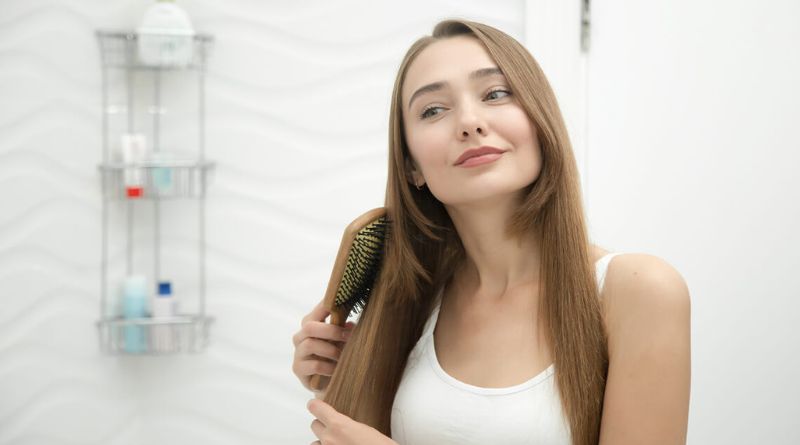Managing hair with an oily scalp and dry ends can be a challenging task. Finding the right balance between controlling excess oil production at the roots while keeping the hair ends hydrated and nourished requires a targeted approach to hair care. Here are eight essential steps to include in your hair care routine for addressing this common hair concern.
1. Choose the Right Shampoo

When dealing with an oily scalp, selecting the appropriate shampoo is crucial. Look for a clarifying shampoo specifically formulated for greasy hair. These shampoos often contain ingredients such as salicylic acid or tea tree oil, which help to reduce excessive oil production and purify the scalp. Incorporating a clarifying shampoo into your routine can effectively remove buildup and leave your scalp feeling refreshed.
2. Condition the Ends
While it’s essential to address the oiliness at the roots, it’s equally important to hydrate and nourish the dry ends of your hair. Opt for a lightweight, moisturizing conditioner and focus on applying it from the middle of the hair shaft to the tips. Avoid applying conditioner directly to the scalp, as this can weigh down the hair and exacerbate oiliness. By conditioning the ends regularly, you can prevent them from becoming brittle and prone to breakage.
3. Limit Washing Frequency
Contrary to popular belief, washing your hair too frequently can strip away natural oils from the scalp, leading to increased oil production. Aim to wash your hair every two days or every other day to maintain a healthy balance of oils. On days when you don’t wash your hair, consider using a dry shampoo to refresh your roots and absorb excess oil. This will help extend the time between washes while keeping your hair looking fresh and voluminous.
4. Use Dry Shampoo

Dry shampoo is a lifesaver for those days when you need a quick hair refresh without washing it. This handy product absorbs excess oil at the roots, leaving your hair looking clean and revitalized. When using dry shampoo, focus on spraying it onto the scalp, particularly at the roots, and massage it in thoroughly to ensure even distribution. Incorporating dry shampoo into your routine can help maintain the freshness of your hair between washes.
5. Avoid Hot Water
When washing your hair, opt for cool or lukewarm water instead of hot water. Hot water can strip away natural oils from the scalp and hair, leading to increased dryness at the ends. By using cooler water temperatures, you can help preserve the natural oils and moisture balance of your hair, preventing it from becoming overly dry and brittle.
6. Protect Your Ends
Excessive heat styling can further exacerbate dryness and damage to the ends of your hair. Minimize the use of heat styling tools such as flat irons and curling wands, and always use a heat protectant product before applying heat. Additionally, consider air-drying your hair whenever possible or using the lowest heat setting on your hair dryer to reduce heat-related damage. Protecting your ends from heat styling can help maintain their health and integrity.
7. Weekly Deep Conditioning Treatment
Give your hair a weekly treat with a deep conditioning treatment to moisturize and nourish dry ends. Choose a hydrating hair mask or deep conditioner and apply it generously to the lengths and ends of your hair. Leave the treatment on for the recommended time before rinsing thoroughly. Deep conditioning helps replenish moisture, improve elasticity, and restore vitality to dry, damaged hair ends.
8. Trim Regularly

Regular trims are essential for maintaining the overall health and beauty of your hair, particularly when dealing with dry ends. Schedule a haircut every 6-8 weeks to remove split ends and prevent further damage. Trimming your hair regularly helps to maintain its shape, reduce breakage, and promote healthy growth. By keeping your ends trimmed, you can prevent split ends from traveling up the hair shaft and maintain the integrity of your hair’s structure.







